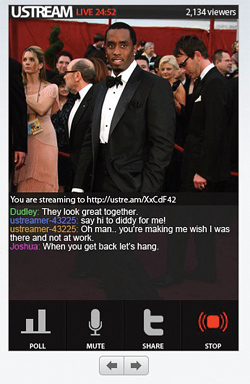A Thrilling 40-Year Ride From Portapak to iPhone

Over the last half of 2009, using parts that I found on eBay, I assembled a vintage, first generation three-tube Sony Betacam. When it was finished, the project was a real eye opener.
The Betacam I had remembered from 1983 as lightweight relief from the drudgery of the 1970s-era RCA TK-76 was, in fact, a huge, heavy monster itself. The first camcorder might have cut the cable between camera and recorder, but I can assure anyone now that it was no lightweight!
Those of us who grew up in the “portable” revolution of video sometimes wrap our memories in nostalgia. In the 1970s, when I was on the road for the networks, traveling “light” meant transporting at least 20 huge, weighty Anvil cases from city to city. Usually, the camera flew first class, with its own seat, in order to keep the finicky tubes in registration.
As young men, we all fooled ourselves about the amount of weight we carried around. I remember getting certified as a Steadicam operator with the device’s inventor, Garrett Brown. He assured me that my supporting a huge video camera on a five-foot arm would never hurt my back. That promise went right along with doctor-recommended cigarettes. I’ve got the back problems today to prove it.
I reminisce because the past makes me appreciate the “real” video revolution we are in today. In December 2009, I did something I couldn’t have dreamed of when I started. I broadcast a live, real-time video-audio feed directly from my iPhone to the Internet.
A VIDEO REVOLUTION
On Dec. 9, Ustream, the streaming media company, got approval of a free application from Apple for live broadcasting from the iPhone. I downloaded the “app” and set up a no-cost account. My first “broadcast” was of my cat from my apartment. I watched the feed live on my computer from my own apartment.
Later that night, at a music event, I tried it again. The stage in the small Manhattan night club was a bit dark, but I could see the musicians clearly and the audio quality of the music was excellent.
For one who spent years trying to arrange difficult telco and satellite video feeds from Latin American dictatorships and other foreign countries, the Ustream app was nothing less than a miracle to me. I was startled by its simplicity and ease of use. The huge implications of this invention offer a “wow” moment in 40 long years of technology development.
It means that anyone, from virtually anywhere, can feed live video and audio that can easily be picked up by news organizations around the world. One iPhone could simultaneously feed real-time video to the entire world. This, quite honestly, blows my mind.

Ustream for the iphone was launched last month The Ustream mobile application is beautifully designed. The app allows one to send advance word of a broadcast via Twitter and then broadcast live from the iPhone or record the video and upload later. The viewer can watch the stream live and interact via chat with the sender. Through settings, the application can be integrated to send the video to not only Ustream’s Web site, but simultaneously to Facebook and YouTube.
In fairness, Ustream and other streaming media vendors had earlier applications that allowed broadcasting from select Android and Nokia phones, but it was a significant day when Apple opened the market-leading iPhone to this innovation. After signing up for a Ustream account, the iPhone owner can immediately punch the “Go Live” button and start streaming video from the iPhone’s camera to the Web using WiFi or AT&T’s 3G network.
THE GOOD, THE BAD AND THE UGLY
The grand irony of this breakthrough in video technology is that it comes at the absolute worst time in both the history of the traditional television industry and the nation’s faltering economy. Over-the-air broadcasting is in serious trouble and television news is in a steep decline.
The iPhone innovation opens the door to hordes of untrained, unpaid “citizen journalists” at a time when stations are laying off their most skillful reporters.
It’s very possible the result will be a glut of on-location video without the professional reporting and skilled analysis necessary to make sense of it. I learned long ago that advancements in television technology do not assure improved television. Very often it means the opposite—opening the door to unskilled novices who exploit the tools for financial gain.
I suspect that many hungry broadcasters trying to save a buck will tap iPhone owners for free “content” and try to spin it as an innovation in news. Some viewers will always believe them and their dumbed-down fare will pass as “news.”
What this means to personal privacy is downright scary and will no doubt play out when pictures of the next Tiger Woods becomes fair game.
However, for the real innovators in the next generation of news programming, the iPhone is a remarkable advancement that could be used in new and marvelous ways. The video quality will improve rapidly and it will be left to human ingenuity to see what creative uses come from it.
I saw my first black-and-white Sony Portapak rig at the 1968 Democratic National Convention in Chicago and salivated then over the possibilities of what portable video could bring. Now, more than 40 years later, video technology has reached new levels of excellence. Sadly, it’s the human uses of it that need major improvement.
Frank Beacham is an independent writer-producer based in New York City. Visit his Web site atwww.frankbeacham.com.
Get the TV Tech Newsletter
The professional video industry's #1 source for news, trends and product and tech information. Sign up below.
Frank Beacham is an independent writer based in New York.

